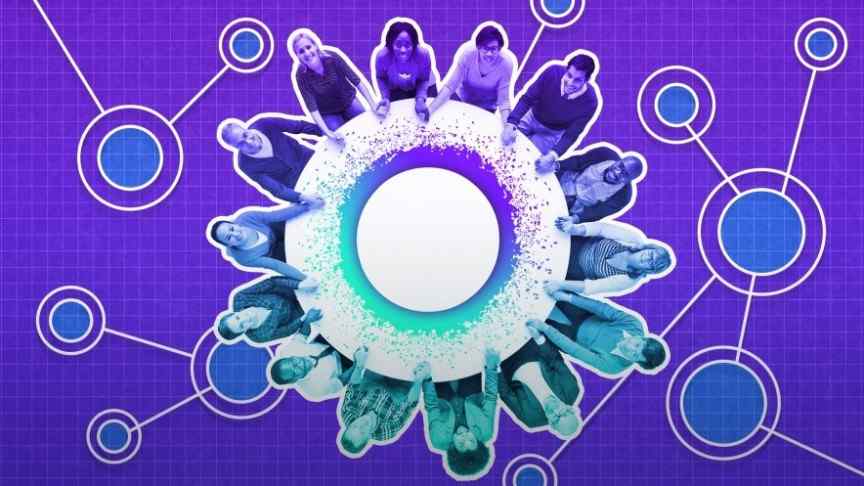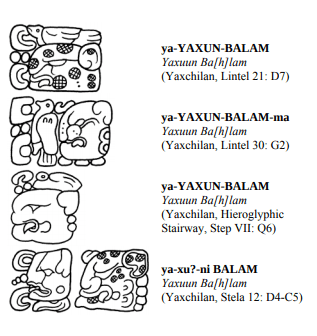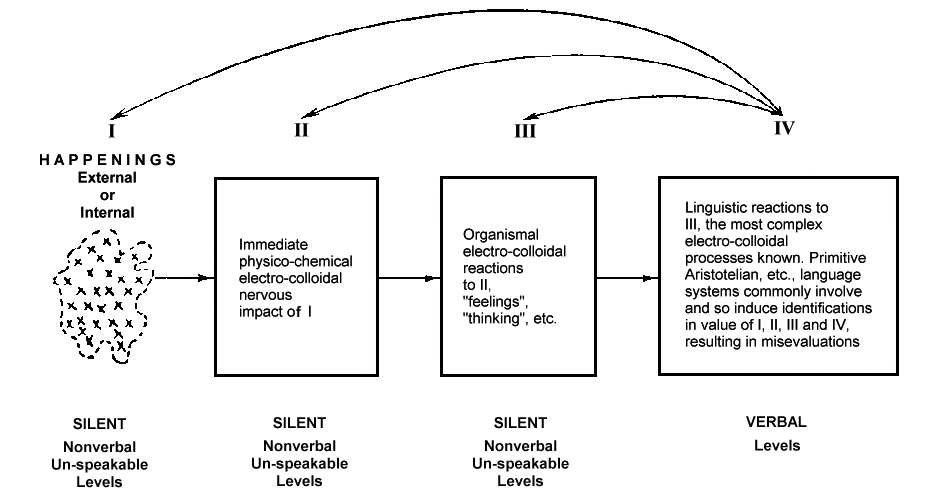
Holochain Part 3: Forming Communities, Projects and Ecosystem, Further Commentaries
Nov 15, 2018, 6:38AM by Martin Banov
by Martin Banov
The final piece in our three-part analysis of Holochain looks at communities and projects forming around it and revisits the core philosophy.
This is the final part of a three-part series on Holochain. In part one of the series, we looked at the underlying philosophy behind Holochain and Ceptr. In part two, we looked at the technical specifications and architecture of hApps in the Holochain ecosystem. In the following analysis, we will look at the projects and communities emerging around Holochain.
There are a number of start-ups and initiatives that have formed around Holochain in alignment with its mission, values, and philosophy. In addition to a partnership with Promether and affiliations and shared goals with the Mozilla Foundation (Jim Cook, Mozilla CFO, has been expressly supportive of Holochain), there are several Holochain partners that are worth a closer look. Below is a quick overview of some of them.
Sacred Capital: Programmatic Collectives
Sacred Capital is an early phase Singaporean startup aiming to utilize Holochain's notion of currencies and social value in a fabric providing access to all kinds of networks and their currency flows (of reputation, niche services provision, learning and knowledge exchanges, etc.), with Sacred Capital itself aspiring to operate as a 'programmatic collective'.
In their official site they explain:
Sacred Capital's reputation interchange helps app creators and institutions scale new different forms of value within their eco-system. How? By plugging into the Reputation Inter-change, entrepreneurs can import specific behaviour into their eco-system. They can also modulate behaviour within their eco-system by exporting their rewards back to the inter-change. The result? Multi-dimensional capital that allows you to scale different kinds of value.
Initiators of movements, conversations and ideas can now find validation in a formal economic language. In the past, we all had to rely on a monolithic economic language, designed for amplifying one form of value. However, by creating a formal economic language for social and cultural capital, we can scale new kinds of value. The key lies in celebrating diversity over homoegeneity.
Specifically, SC allows for importing and exporting reputations across eco-systems, amplifying certain desired behaviors and characteristics and allowing network effects to develop within a particular context or framework of organization. The Interchange ensures there are feedback loops - both positive and negative, allowing the reputation from one ecosystem or locality to be transferred to another ecosystem, domain or business sector.
This is important given that counterparty reputation and trust is the basis of any business and SC is, in that regard, about giving reputation money-like qualities, rather than monetizing reputation per se.
Ulex: A Non-Governmental Legal System
Ulex is an open-source legal system for special jurisdictions (online markets, digital communities, and startups, special economic zones, distributed crypto-economies, etc.) In “Your Next Government?: From the Nation State to Stateless Nations” (2018), a handbook of polycentric law, Ulex is defined as:
In very general terms, Ulex protects personal and property rights with efficient and fair dispute resolution processes and rules, encouraging economic growth and promoting the rule of law. Ulex applies not by sovereign command but by the mutual consent of contracting parties, and issues from no single country, but instead draws on legal traditions from across the globe. In these ways Ulex differs from the legal systems run by traditional nation states.

The Holochain architecture appears to be ideally suited for a decentralized legal system of this sort (existing blockchains, not so much), providing what is necessary either directly as a property of the system or allowing for easily setting up and integrating into the infrastructure aspects and functionalities specific to the domain.
Producers Market: Agricultural Supply Chain
Producers Token is an agricultural supply chain and B2B marketplace startup leveraging producer networks across product lines and opening financing and marketing opportunities for producers. The white paper states:
Producers Coin will use the cryptotechnology and distributed ledger system of Holochain. Producers Token has chosen to partner with Holochain due to a strong alignment of values, integrity and vision around building an agent-centric architecture that supports farmers transactional needs.
The mutual credit-accounting system that Holochain presents allows for the creation of cryptocurrencies that are backed by real assets. As it stands, cryptocurrencies today are highly volatile, making them unviable for facilitating a market-exchange of agricultural goods.
Junto: User-Driven and Censorship-Resistant Social Networking as a Distributed Public Service
Junto is a non-profit dedicated to building healthier forms of social networking. Through distributed and censorship-resistant mediums not susceptible to political and profit-driven manipulation, Junto is aimed at fostering a more authentically human atmosphere free from the pollution and toxicity that has come to define platforms like Facebook (which can, as we've seen, be employed as political instruments of manipulation and profit-driven data gathering fabrics, invisibly turned against the public "user").

A Medium post entitled "The Medium is the Message" briefly outlines the Junto project's design philosophy and purpose:
The evolution of social media lies in shifting the current nature of interactions. We believe the forms we communicate through are just as important as the message itself.
Core.Network: Customizable Social Networking Interface for Data-Driven Insights and Cross-Platform Monitoring
Core Network is another social networking oriented application that leverages Holochain's capacity for combining different flow indicators in information system feedbacks, allowing for accessing and customizing all access across different social networking platforms within a single integrated dashboard.
The official site states:
Unify your social network silos into a single visual dashboard. Own your data. Create and curate content, share privately or publicly, for free or for cryptocurrency. Develop learning experiences. Create community currencies. Track impact, create communities, and reach your people, unfettered by paywalls.
Why not view it in a 3D timeline, or see relationships between people and posts in an interconnected graph? Transform your views for powerful insights and sensemaking.
Comet: A Holographic and Distributed Reddit
Comet is a hApp alternative to Reddit designed to end moderator abuse and Sybil attacks by implementing a voting system which weighs votes according to subjective factors and preferences, rather than counting votes as objective indicators.
The Github of the project can be found here.
Part II: Revisiting the Philosophy Behind Holochain
Further Commentary on the Societal Role and Purpose of Holochain, the Underlying Philosophy and Vision, Related Cross-References and Converging Domains
As I wrap up this three-part series, I want to return to where it began, with an investigation into the fascinating philosophy that underpins Holochain and Ceptr development. Holochain is at the center of a new approach to knowledge and knowledge sharing, a paradigm shift.
Knowledge is not a series of self-consistent theories that converges towards an ideal view; it is not a gradual approach to the truth. It is rather an ever increasing ocean of mutually incompatible (and perhaps even incommensurable) alternatives, each single theory, each fairy tale, each myth that is part of the collection forcing the others into greater articulation, and all of them contributing, via this process of competition, to the development of our consciousness. Nothing is ever settled, no view can ever be omitted from a comprehensive account...
Experts and laymen, professionals and dilettanti, truth-freaks and liars-they are all invited to participate in the contest and to make their contributions to the enrichment of our culture. The task of the scientist. . . is no longer 'to search for the truth', or to 'praise God', or 'to systematize observations', or 'to improve predictions.' These are but side effects of an activity to which his attention is mainly directed and which is to make the weaker case the stronger (as the sophists said) and thus to sustain the motion of the whole.
- Paul Feyerabend, "Against Method"
The previously referenced p2p foundation Holochain blog post ("What is Holochain and why does it matter?", dated February 2018) concludes with the following paragraph:
Because the information isn’t forced to sit uniquely in each application, the end user can create a customized experience with the parameters of their choosing. The possibilities for data mining and consensus building are endless. End the data-monopolies of Facebook and Google. If we choose to use Holochain, we choose how our information is shared and empower the commons to utilize it for collective growth and understanding.
These receptive capacities of the Holochain network and the ability to "pull" and compose them in all kinds of possible configurations has important long-term implications as relating to neural plasticity and the neuro-perceptual feedback loops it might establish. Consequently, these could in effect bring about the gradual re-wiring of our so-called intellect (or neocortex, an endlessly differentiating organ that never settles into a finally integrated shape or form, but mirrors instead the environment and our perceived conception of it, associating composites into adaptive or maladaptive habits and forms of behavior, prosthetic extensions and tools. "We shape our technology as our technology, in turn, shapes us." in order to better comprehend and be better equipped to reason about and integrate into our surrounding socio-technical "global village" in the 21st century.
This is a historical juncture during which a successful next phase transition necessitates cultivating radical new, ecological (i.e., relevant to complex systems and adaptive behaviors within them) forms of habitual thinking as patterns of coherence and less rigidly dogmatic, more multi-disciplinary and creative approaches/methods to investigative/scientific research and sense-making. It has been known for quite some time now that culture/cultural evolution precedes biological evolution and plays an important role in determining the ways in which the latter goes on to develop (See epigenetics, etc.)
We need to have a vision of technology that's informed by sociology, philosophy, and geopolitics.
• Amir Taaki in conclusion to his recent talk at the Web3 Summit.
It is critical that innovation is grounded in vision, such that it is not rooted in the worldviews and assumptions that have created the problems it is intended to solve, thereby reproducing them each time that it seemingly implements a solution. Mindsets and groupthink behavior too often takes up ideological assumptions as axioms and accepted fact, a tendency David Hume has described as the "is-ought problem", (also known as Hume's guillotine).

Brett Frischmann (co-author of "Re-Engineering Humanity"), in a recent article published by The Economist ("How is technology "re-engineering" humanity?"), reiterates the above, saying:
Human civilisations have re-engineered humanity for millennia. “Humanity” is who we are, and are capable of being, within our built world. It’s reflected in the world we’re building for ourselves, our children, and future generations. Technology re-engineers humanity in part by affecting human capabilities and in part by shaping and constituting our values, beliefs, and shared commitments.
The technological, social, economic, educational, political, and cultural systems that many people rely on are interconnected and heavily reliant on digital tech. We need systemic change so that we can live free.
A paradigm shift, it should be remembered, is not the result of trying to fix what is fundamentally broken and keeping the ship afloat for just a while longer in postponing the inevitable, but constitutes a radical departure (a “line of flight” which we discuss in detail in part one.) from the prevailing doxa, creating the terms and setting the stage for its own enunciation into being. As Rabbi Leibowitz observed, from all 20th-century projects (socialism-communism, fascism, national-socialism, etc.) it was only Zionism that somehow could be said to have succeeded.

In hindsight/retrospect, when we look back now it is not difficult to understand that those ideologies and the socio-political and economic programs for their realization had been doomed from the start, having been based on fundamentally flawed assumptions and unrealistic aspirations, in turn failing to clearly evaluate and understand their historical reality and conditions (additionally inflamed and escalated to the level of large-scale collective delusions, violent divisions and genocidal campaigns, the aftermath of which had left the world in post-traumatic shock and disbelief as to how had this been possible and why did it get so terribly out of hand). One among the many examples that come to mind is Mao's campaign for exterminating all sparrows in China, which subsequently impacted the ecosystem so as to cause certain insects to spread and decrease rice yields, exacerbating famine and leading to economic disaster.
"We have wired into our social systems a fundamental incapacity to see or nurture deeper value. We suffer from a poverty of measurement, obscuring a mountain of wealth behind a molehill of money."
-- Arthur Brock
But even more recently, the 2008 financial meltdown had been also a central failure in organizational complexity, having resulted from a lack of adequate awareness as to the consequences of tweaking parameters within non-linear, dynamic complex systems (such that they don't lend themselves to general prescriptions, repeatable with the same results through time, since systems/markets/circumstances/financial instruments/etc. evolve and mutate). So, when the regulators should have given the red light to avoid the mayhem, they didn't recognize the nature of the problems and failed to evaluate the situation accordingly. They gave the green light instead to what, after a phase of building up, imploded in the sub-prime mortgage crisis, derailing the economy and setting a disturbing example of what "systemic risk" implies in a globally inter-connected world. The dangers of centralization, combined with human fallibility when the impacts cannot be locally contained, echo throughout the global economy with unforeseeable consequences and long lingering fallouts.
While black swans do periodically occur, they are more often than not an epistemic failure to see what is in plain sight due to certain blind spots we've developed as a result of narrow specialization and/or how our sense-making faculties are attuned and biased. We cannot see what we don't know (and we mostly just see a small part of what we do know, or think we know). Further, we cannot anticipate what we are unable to register (let alone things much larger than our individual selves.
This is what Timothy Morton terms hyperobjects - things so "massively distributed in time and space" as to elude our awareness of their presence, or processes and cycles - historical, geological, etc. - that take place in time scales of thousands of years). So, while we hear about ecological crises, peak oil, climate change, nuclear proliferation and all kinds of cataclysmic global events and potential doomsday scenarios of sudden institutional-societal and civilization collapse, we don't really comprehend them as real, impending threats on the horizon. They are still phenomenologically foreign to us as we can neither see nor really imagine them.
Along those lines, Singapore's Deputy Prime Minister recently made an important statement (published in Financial Times, under the title "We need a new, more co-operative international order") in light of recent events, saying:
We are at a critical juncture. The central challenge is to create a new, co-operative international order for a world that has changed irreversibly: one that is more multipolar, more decentralised in decision-making, and yet more interconnected. We otherwise face the prospect of fragmentation, and the steady weakening of our capacity to respond to the national and collective challenges of the future.
There is no going back to the old multilateralism. There is no single conductor. There are already many more orchestras in play. We need a new harmony. A new, co-operative order is crucial to achieving the most fundamental goals of the international monetary and financial system: to enable nations to achieve stronger, more inclusive and more sustainable growth, to avert financial crises, and to tackle the pressing global challenges that affect us all.
[...]
Policy thinking on many of these reforms has often been shaped by where one sits. We need a new collective resolve, shaped by the larger goal that every nation has a vested interest in: building a co-operative international order for an era vastly different from when the Bretton Woods institutions were built 70 years ago, so that we keep the world open for growth.
Even if we acknowledge certain problems as such, in principle and somewhat abstractly, or recognize the necessity to change a whole lot of patterns of how we conduct ourselves, we still find ourselves just "knowing" what we've come to accept as more or less just a phrase, assertion or claim, divorced from anything more concrete or a deeper grounded realization about the complex, multi-dimensional implications involved or their spectrums of nuance and variation and, on the other hand, stuck within the desensitized inertia of self-perpetuating dysfunctions and catch 22’s, a seeming game theoretic deadlock of rivalry, vain pursuits, eroding trust and accelerated social fragmentation.
This is the final stage in Giambattista Vico's (17th century historian and political philosopher) three-fold cycle defining the course of universal history (eons naturally following from each other and reflected in the manner in which language evolves through the ages) that he refers to as "the barbarism of reflection" (which concludes the Age of Man and enters into beginning the cycle anew). Vico's principle of Verum Ipsum Factum ("Truth is made", meaning that the criterion for truth is to have made it) has become an epitome of constructivist epistemology and his own work is based on investigations into the concurrent evolution of language and the social institutions grounded in it.
門 = door.
口 = mouth.
問 = ask. a combination of "mouth" and "door."
Chinese and other ideogrammatic/hieroglyphic writing systems seem to condition/train a more holistic, intuitive and nuanced mode of expression and articulation, completely different from the implied metaphysics/ontology and sense-perceptual predisposition of alphabetic subject-predicate constructions. Furthermore, the properties of Chinese script are such that it conveys etymology and intention all at once, and also encodes much of philosophy and history in the way different elements are composed together within a pictogram to produce meaning. It is said that due to the nature of their writing system, the Chinese are more attuned to "seeing the whole", the "bigger picture" (Gestalt) and to thinking in uninterrupted continuity and cyclicity - as a single pictogram may invoke many complex and disparate associations all at once.
Meanwhile linear-sequential phonetic alphabet writing is in itself devoid of any meaning (the letter corresponds to a sound, not a thing) and its syntactical structure and grammar already presupposes a kind of common sense world order and axioms which all too often don't adequately square with reality in representing actual states of affairs in the world as they tend to take place, and as such are largely the reason for many habitual logical fallacies, paradoxical beliefs, creeping biases, and falsely stated composites in how we understand and conduct ourselves, engage in discourse, examine things, formulate argumentation, and reach conclusions.

Alfred Korzybski (founder of general semantics, famous for his phrase, "the map is not the territory") in that sense, had famously proposed that the verb "to be" in all its forms ought to be dropped from usage, as it falsely infers essentialism, assuming a static essence to things. For Korzybski, "to be" privileges identity, inverses relationships, falsely ascribes agencies and above all is the source of much epistemological error, faulty judgment, and misconception. He asserted, back in the 1920's, that language need to urgently revise and accommodate itself to reflect the dynamic reality of how things actually work, as fitting the non-Aristotelian world of modern physics, and that the structural flaws inherent in language perpetuate hallucinations that are psychologically and neuro-developmentally harmful).

How does this all relate to Holochain?
Ceptr/Holochain is, in a sense, like an augmentation or prosthetic extension (a metaphor itself constituting a technological medium/carrier, just like any other construct, whether material or symbolic) to the ways we can frame and articulate valid states of the world. So, instead of being stuck with fixed, static representations and what Marx called the universal equivalent of measure (referring to money), we are able to actively monitor/observe and express/capture things in motion. We are able to reveal and make visible otherwise hidden and often abstract relationships at different scales of organization, rich networks of flowing information, their continuous transformations/translations, and all the different actor-networks of interactions that things pass through, altering between states of being and modes of functioning in response to changing circumstances.
UNIVERSAL EQUIVALENT: An object that is the measure by which all commodities are compared and exchanged on the market. In capitalism, this function is eventually taken over by money, first precious metals then paper money.
Source: Dictionary of Marxist terms.
The ultimate universal equivalent according to Marx is "world money", i.e., financial instruments that are accepted and usable for trading purposes everywhere, such as bullion. In the world market, the value of commodities is expressed by a universal standard, so that their "independent value-form" appears to traders as "universal money". Nowadays the US dollar, the Euro, and the Japanese Yen are widely used as "world currencies" providing a near-universal standard and measure of value. They are used as a means of exchange worldwide, and consequently most governments have significant reserves or claims to these currencies.
Source: Wikipedia entry on "value-form".
Holochain's composability and functioning as an unencloseable carrier is in that way similar to how Chinese or Mayan ideograms are assembled, sometimes expressive of an entire scenery, specific situation or a story, and containing multiplicities of extending trajectories, a sort of historicity and memory that functions as a cut-up: expressing and invoking of continuity and integrative organization in duration, rather than juxtaposing of order and punctuated sequence in space. And thereby, having the capacity to encode, preserve and convey much more information in a much more compressed form. (Which also raises the matter of meaning's directionality - as immanently invested and organically formed, or as an externally juxtaposed order of things, dictated by institutional hierarchies and cultural leftovers from times bygone.)
William Burroughs and the Cut-Up Method Reveals the Many Directions of Meaning

William Burroughs revived the cut-up method from the Dadaist movement (originally attributed to Tristan Tzara) and used it extensively throughout his work. In "The Third Mind" (co-authored with Brion Gysin) Burroughs has this to say about cut-up in an interview at the beginning (which sums up quite a bit):
INTERVIEWER: What do cut-ups offer the reader that conventional narrative doesn't?
BURROUGHS: Any narrative passage or any passage, say, of poetic images is subject to any number of variations, all of which may be interesting and valid in their own right. A page of Rimbaud cut up and rearranged will give you quite new images. Rimbaud images—real Rimbaud images—but new ones.
INTERVIEWER: You believe that an audience can be eventually trained to respond to cut-ups?
BURROUGHS: Of course, because cut-ups make explicit a psycho-sensory process that is going on all the time anyway. Somebody is reading a newspaper, and his eye follows the column in the proper Aristotelian manner, one idea and sentence at a time. But subliminally he is reading the columns on either side and is aware of the person sitting next to him. That's a cut-up. I was sitting in a lunchroom in New York having my doughnuts and coffee. I was thinking that one does feel a little boxed in in New York, like living in a series of boxes. I looked out the window and there was a great big Yale truck. That's cut-up—a juxtaposition of what's happening outside and what you're thinking of.
I make this a practice when I walk down the street. I'll say, When I got to here I saw that sign, I was thinking this, and when I return to the house I'll type these up. Some of this material I use and some I don't. I have literally thousands of pages of notes here, raw, and I keep a diary as well. In a sense it's traveling in time.
Most people don't see what's going on around them. That's my principal message to writers: For Godsake, keep your eyes open. Notice what's going on around you.
INTERVIEWER: The one flaw in the cut-up argument seems to lie in the linguistic base on which we operate, the straight declarative sentence. It's going to take a great deal to change that.
BURROUGHS: Yes, it is unfortunately one of the great errors of Western thought, the whole either-or proposition. You remember Korzybski and his idea of non-Aristotelian logic. Either-or thinking just is not accurate thinking. That's not the way things occur, and I feel the Aristotelian construct is one of the great shackles of Western civilization. Cut-ups are a movement toward breaking this down. I should imagine it would be much easier to find acceptance of the cut-ups from, possibly, the Chinese, because you see already there are many ways that they can read any given ideograph. It's already cut up.
Ceptr coder, Eric Harris-Braun has an insightful blog post which makes clear some of the connection between Burroughs' non-linear thinking and the Ceptr philosophy. The post, dating from July 2016, is entitled "Ceptr and the Bicameral Brain" and in it, he describes the two programming/problem-solving approaches Ceptr implements, and how they're embodied in an interesting dialectic which also reflects the modes of thinking associated with each cerebral hemisphere (linear-algorithmic and Gestalt pattern matching). In brief, receptors listen for patterns of data that they match from the dynamic landscape of data flows external to them and once an incoming signal matches a set pattern being listened for, an "algorithmic" program/script is triggered (in the form of a run-tree of set instructions which the Ceptr virtual machine reduces to its result).
Additional Resources
Part one of our series looking at the underlying philosophy behind Holochain and Ceptr can be found here.
Part two, in which we look at the technical specifications of hApps in the Holochain ecosystem can be found here.
A talk on complex adaptive systems by Prof. Dave Snowden at the Domain-Driven Design Conference in Europe earlier this year.
The Metacurrency project official site. is worth investigating.
And finally, Arthur Brock and Eric Harris-Braun's personal blogs (where a range of insightful blog posts and relevant articles related to Ceptr can be found).
Disclaimer: information contained herein is provided without considering your personal circumstances, therefore should not be construed as financial advice, investment recommendation or an offer of, or solicitation for, any transactions in cryptocurrencies.

















